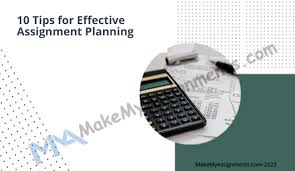
Hook: Have you ever hit “send” on an email or submitted a report, only to realize later that it’s riddled with typos and grammatical errors? Don’t worry; you’re not alone. Studies show that the average person makes around four spelling or grammar mistakes per 100 words. However, these mistakes can harm your credibility and leave a negative impression on your readers. That’s why it’s essential to develop effective editing and proofreading techniques.
Introduction:
Editing and proofreading are essential components of the writing process. Editing involves revising your work for clarity, consistency, and accuracy, while proofreading focuses on identifying and correcting grammar, spelling, punctuation, and formatting errors. Both techniques are critical for ensuring that your writing is polished and error-free. Effective editing and proofreading can be time-consuming, but the benefits are worth the effort. They can help you to communicate your ideas more clearly, increase your credibility, and leave a positive impression on your readers.
Develop a Systematic Approach to Editing and Proofreading
Developing a systematic editing and proofreading approach can help you save time and ensure you don’t miss any errors. Here are some steps you can follow:
- Take a Break: After you’ve finished writing, take a break for a few hours or even a day. This will give you a fresh perspective when you return to work.
- Review for Structure and Clarity: Read your work to ensure your ideas are presented logically and coherently. Make sure that your writing flows smoothly and that your arguments are well-supported.
- Check for Consistency: Ensure that your writing is consistent in tone, style, and formatting. Use a style guide to help you maintain consistency throughout your work.
- Use Editing Tools: Many editing tools are available to help you identify errors in your writing. Tools like Grammarly and Hemingway Editor can be particularly helpful.
- Proofread Carefully: After you’ve edited your work, proofread it carefully. Read through it word by word, line by line, and ensure no grammar, spelling, punctuation, or formatting errors.
Learn to Self-Edit
Self-editing is an essential skill that can help you improve your writing and save time in editing. Here are some self-editing techniques you can use:
- Read Your Writing Out Loud: Reading your writing aloud can help you identify awkward phrasing, run-on sentences, and other issues that may be difficult to spot when reading silently.
- Use Active Voice: Using active voice can make your writing more engaging and help you to communicate your ideas more effectively.
- Eliminate Redundancies: Redundancies can make your writing wordy and dull. Look for unnecessary phrases and eliminate them.
- Use Strong Verbs: Strong verbs can make your writing more dynamic and engaging. Avoid using weak verbs like “to be” and “to have.”
Get a Second Opinion
Getting a second opinion on your writing can be incredibly helpful. A fresh pair of eyes can help you identify errors you may have missed and provide valuable feedback on your writing. Here are some tips for getting a second opinion:
- Find a Trusted Editor: Find someone experienced in editing and proofreading and who you trust to provide honest feedback.
- Be Open to Feedback: Listen carefully to your feedback and be open to making changes. Remember that the goal is to improve your writing.
- Consider Different Perspectives: Consider seeking feedback from people with different perspectives, such as colleagues, friends, or family members.
Conclusion:
Effective editing and proofreading are essential for anyone who wants to communicate their ideas clearly and effectively. By developing a systematic approach to editing and proofreading, learning to self-edit, and getting a second opinion, you can improve your writing and ensure your message is conveyed accurately and professionally. Remember that editing and proofreading take time and effort, but the benefits are well worth it. With practice and dedication, you can become a skilled editor and proofreader and take your writing to the next level.







